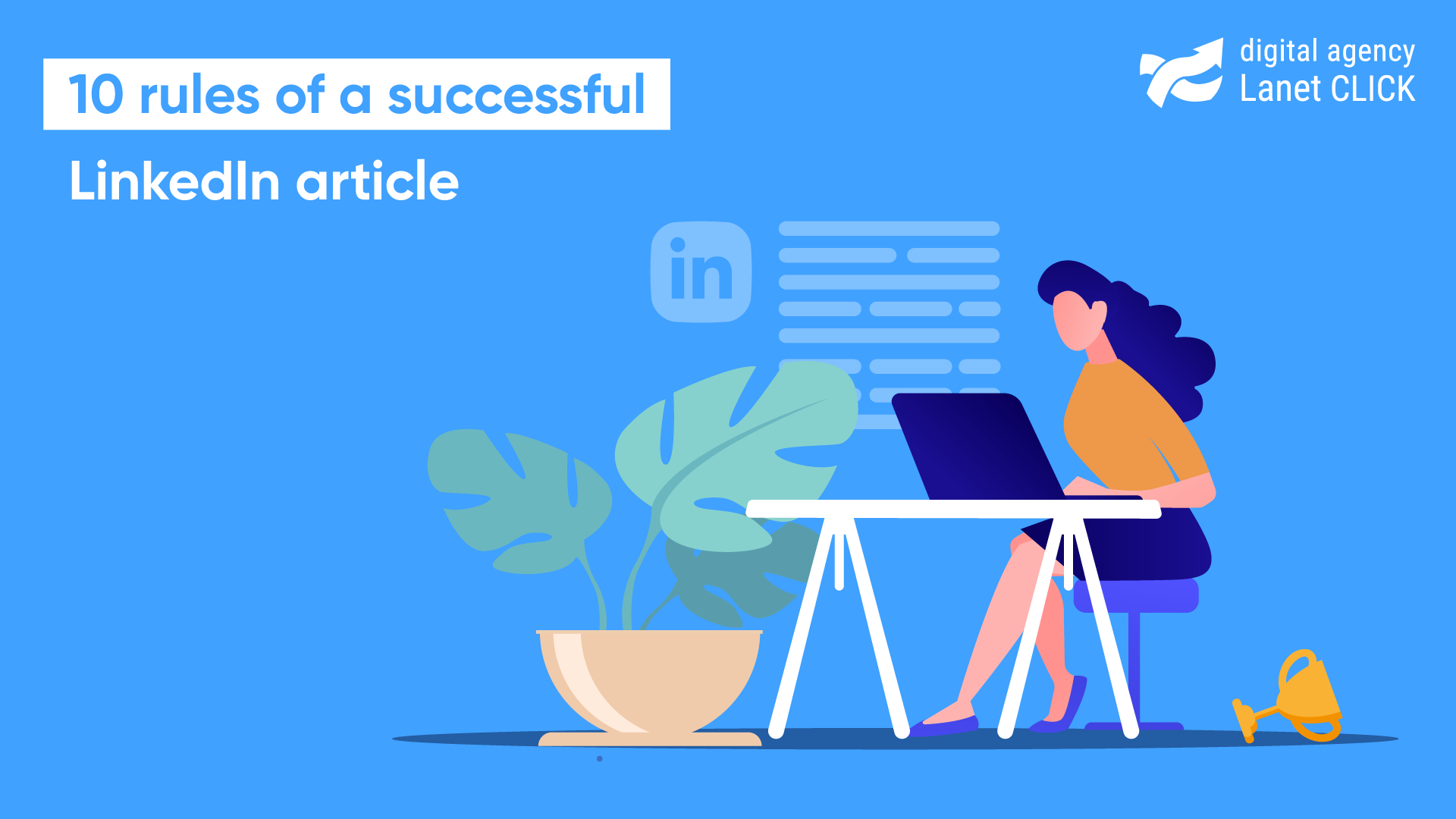
Competitor link analysis: step-by-step instructions
For a site to rank high in search results, it is important to work not only with content and technical […]


An article on the LinkedIn social network will allow you to demonstrate your knowledge and expertise, as well as interest a potential employer or business partner in cooperation. So why not use this tool? At the same time, it is worth writing the material so that other users of the social network want to read it. Below we will talk about 10 rules for a magnetic article.
Writing an article begins with choosing a topic. It should be relevant and meet the needs of the readers. If you don’t know what to write about, keep some tips in mind:
Read also: 12 components of the perfect blog article
The title of the article is the first thing that the user pays attention to. If the title is good, then the user will continue reading with interest. How to create a good material title? Catch a short instruction:
And what do the statistics say? From Conductor’s research, we learn that 36% of the most clickable headlines contain numbers, 21% address the reader directly, and 17% begin with the word How. Therefore, consider this data.

The title can attract attention, but the lead or introduction can delay the reader. Do not start the text with banal phrases (It’s no secret that… etc.), do not pour water and write immediately to the point.
Subheadings highlight the main elements of the text. They also make the material more structured. It allows the article to be easy to read and guides the reader through the entire text. At the same time, subtitles should not only be interesting but also sufficiently informative.
It is not only in the title that you should use an appeal to the reader. When writing an instructional article, use you in the sentences. Readers want to hear about themselves!
Add multiple bulleted or numbered lists to your material. For example, write down advice about one thesis or idea point by point. It will help the reader better perceive and assimilate the information.
If you are aiming to write an expert article, you cannot do so without scientific data. Current research and interesting facts in the field you write about will allow your readers to be confident that you understand the topic and keep up with the news of the industry.
Stories help the reader to visualize the material and transform the author’s writing into their ideas and experiences. Therefore, a text with at least elements of storytelling will be better remembered, and people will be more willing to share it. You can attract the reader’s attention by placing the story at the beginning, or you can end the material with storytelling. For your stories to be convincing, you must follow several conditions:
To break up the canvas of text, load multimedia. Moreover, LinkedIn has such an opportunity. Add actual and relevant memes or images with graphics to your content that will explain complex data much more easily than a large amount of text.
Make sure that your material is logical in structure and presentation. Also, check that all titles in the article are uniform (written according to the same principle).
We also advise you to monitor the accuracy of the data with particular care. Because text with errors, instead of helping you achieve expert status in a professional environment, will only lower your rankings.
Read also: SEO copywriting: what is it

Sometimes it is difficult to start writing an article. What do writers advise in such a case? Just keep writing. It may not be the most perfect text, but it’s better than putting the material down day after day, waiting for the same inspiration. And the muse may not come. At the same time, the relevance of the topic is being lost, and there are more and more new experts in the field. Therefore, do not postpone the creation of material until better times. Write today. With practice, the process of writing tests will become more pleasant and easier.

For a site to rank high in search results, it is important to work not only with content and technical […]

Artificial intelligence has already changed the rules of the game in search engines. Users are increasingly turning to ChatGPT and […]

Successful website operation starts not with design or content, but with choosing a hosting. It is the technical foundation that […]
A good strategy, perfectly selected digital tools, and their effective application will allow the business to increase profits, grow the customer base, and form recognition and loyalty. Do you want something like that? Contact us.
You have taken the first step towards effective online marketing. Our managers will contact you and consult you soon.